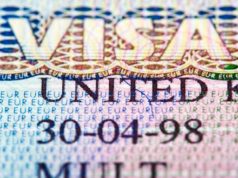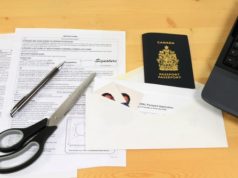
Do You Need a Passport to Go to Canada?
If you’re planning a trip to Canada, you might be wondering if you need a passport. The answer is yes, but as with many things in life, it’s more complicated than that. In this article, we’ll explore the different scenarios in which you might or might not need a passport to go to Canada, and we’ll provide you with updated information on the topic using government resources.
Scenario 1: Travel by Air
If you’re planning to travel to Canada by air, you’ll definitely need a passport. This applies even if you’re a US citizen. The Canada Border Services Agency (CBSA) requires all passengers who fly to Canada to have a valid passport or other travel document that satisfies the requirements of the Immigration and Refugee Protection Act.
What is a valid passport? According to the US Department of State, a passport is an internationally recognized travel document that verifies the identity and nationality of the bearer. To be considered valid, a passport must be:
– Issued by the US Department of State
– Not damaged or altered in any way
– Current (not expired)
– Photographically reproducible (i.e. the photo must be clear and recognizable as you)
– Machine-readable (i.e. the information on the photo page can be read by a scanner)
If you don’t have a passport, you’ll need to apply for one at a US Passport Agency or Acceptance Facility. The process can take several weeks (or even months during peak travel season), so make sure to plan ahead.
Scenario 2: Travel by Land or Sea
If you’re traveling to Canada by land or sea, the answer to whether you need a passport is a bit more complicated. Here are the different situations and requirements:
– US citizens: If you’re a US citizen traveling to Canada by land or sea, you can use a few different types of documents to enter Canada, including a passport, a passport card, an enhanced driver’s license (EDL), or a trusted traveler program card such as NEXUS, SENTRI, or FAST. Note that if you’re traveling by sea from a foreign port, you’ll always need a passport or other WHTI-compliant document.
– Permanent residents of the US: If you’re a permanent resident of the US (a green card holder) traveling to Canada by land or sea, you’ll need to present your green card and your passport from your home country. Note that if you’re a permanent resident of Canada traveling to the US by land or sea, you’ll need to present your Permanent Resident Card (PR Card) or other WHTI-compliant document.
– Other nationalities: If you’re a citizen of a country other than the US or Canada, you’ll most likely need a passport and a visa to enter Canada. Your visa requirements will depend on your nationality, the purpose of your visit, and the length of your stay.
Scenario 3: Exceptions and Waivers
There are some exceptions and waivers to the above rules. Here are a few examples:
– Children under 16 years old: According to the CBSA, children under 16 years old who are US citizens traveling to Canada by land or sea may present an original or copy of their birth certificate, a Consular Report of Birth Abroad, a Naturalization Certificate, or a Canadian Citizenship Card instead of a passport or other WHTI-compliant document. Note that this only applies to children who are traveling with their parents or legal guardians.
– Closed Loop Cruises: If you’re taking a closed loop cruise that starts and ends in the same US port, and the cruise stops in Canada only briefly (for example, to visit Victoria or Vancouver), you may be able to use a WHTI-compliant document instead of a passport. Check with your cruise line for specific requirements.
– Emergency Travel: In certain emergency situations, the CBSA may issue Temporary Resident Permits (TRPs) that allow foreign nationals to enter Canada without a passport or other document. These situations might include medical emergencies, family emergencies, or other urgent and unforeseen circumstances.
New Rules for Travel to Canada
It’s worth noting that starting in 2021, some new rules will go into effect for people traveling to Canada by air. In addition to a valid passport or other travel document, travelers will need to obtain an Electronic Travel Authorization (eTA) before their trip. An eTA is a permission that allows foreign nationals to travel to Canada by air, and it’s linked to your passport electronically. The process to obtain an eTA is quick and easy and can be done online, usually within minutes.
The eTA requirement applies to travelers from visa-exempt countries, including the US, who are flying to Canada for tourism, business, or transit purposes. Travelers who are not visa-exempt (for example, citizens of countries that require a visa to enter Canada) will still need to apply for a visa.
The eTA requirement is part of Canada’s efforts to enhance security and streamline travel procedures. By submitting your biographic and passport information online before your trip, you’ll speed up the processing of your entry into Canada and minimize the risk of delays or complications at the border.
Conclusion
In summary, if you’re traveling to Canada by air, you’ll definitely need a passport. If you’re traveling by land or sea, it depends on your citizenship and the specific circumstances of your trip. Make sure to check the latest requirements on the CBSA website before your trip, and allow plenty of time to obtain any necessary documents. And starting in 2021, most air travelers to Canada will also need an eTA, so take that into account as well. With a little planning and preparation, you can enjoy a smooth and hassle-free trip to our northern neighbor.
In response to the passage of the Western Hemisphere Travel Initiative (WHITI) passed by the government of the United States of America in 2004, as of June 1, 2009, all travelers entering Canada, whether by land, air, or sea, need a passport to enter Canada. On paper, American citizens do not need a passport to enter Canada, but the Western Hemisphere Travel Initiative requires everyone entering the United States of America to possess a passport. As a result, Canadian officials have begun to require a passport for Canada entry from American
citizens so that they are not prevented from returning home.
However, children under the age of fifteen do not need a passport for Canada if they are entering the country at land or sea entry points. American and Canadian children between the ages of sixteen and eighteen crossing the border with school, cultural, athletic, or religious groups and under adult supervision will be allowed to cross the border even if they only have proof of citizenship, such as a birth certificate. These restrictions are relaxed in order to alleviate the potential stain placed on residents of communities near the international border.
The need of a passport for Canada is a sign o the increased importance that controlling travel across the border has been given in recent years in the effort to improve American and Canadian security.


























